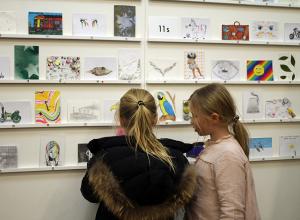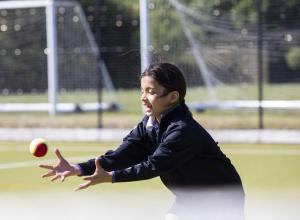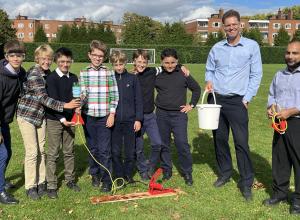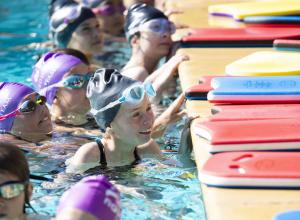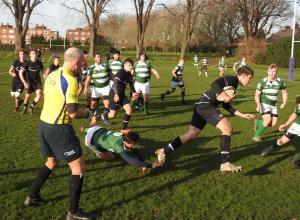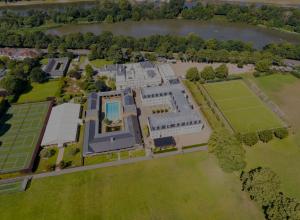
World Book Day reminds Mr Rodricks that Mathematics is a universal language that children need to speak frequently in daily life if they are to become fluent.
As well as giving me the welcome opportunity to dress up in an inflatable rhino suit (see bottom of page), last week’s World Book Day also provided a timely reminder of how important it is to practise speaking the language of mathematics regularly. As part of the day, my 9s Maths class partnered up with Miss Horan’s PP3s to explore the mathematics underlying James and the Giant Peach. It was during this time that I was able to step back and watch how wonderfully well the students were using the language of mathematics to speak to each other.
Because Mathematics IS a language and, as with the more than 6500 languages that are spoken across the planet, mathematics is governed by numerous rules. Developing fluency often requires certain structures to be learnt and understood before they can be applied to more complex situations, successfully.
Mathematics is a lingua franca, a global, even universal, language that transcends boundaries... but like any language, it has rules and nuances that can befuddle the early learner.
In some senses, Mathematics is more than just another language. Even more than English, it is a lingua franca, a global, even universal, language that transcends almost all boundaries. In its use, there are rules or conventions that remain consistent. Take addition for example: 10 + 10 = 20. We may use different representations for the actual numbers and we may use different processes, but at its essence the core concept is shared across cultures and continents. Ten objects plus ten objects is going to equal 20 objects, no matter where we are.
Shape is the same. A square is a square, with exactly the same properties no matter what country you reside in. Whether it is in French, Spanish or Italian, a square has four vertices, four edges and four right angles. These are part of the features that make a square a square and it does not change between countries.
Whether it is in French, Spanish or Italian, a square has four vertices, four edges and four right angles. These are the features that make a square a square
This is not to say that this lingua franca is an easy language for all of us to master. The intricacies of a language are not always straightforward. To achieve fluency requires understanding rules of a complex and diverse nature and, like any language, mathematics has rules and nuances that can befuddle the early learner. Just because our students know some of the ‘words’ of mathematics, it does not make them fluent or mean they understand how the language works.
Making this distinction is often a source of disagreement between home and school. When a reception child is able to count to one hundred, a proud parent will often happily share this information as evidence of their child’s mathematical strength. A teacher will look at it with slightly more caution, knowing that while a child may speak some of the language, there may very well be gaps that still need addressing; that they may not understand what all the numbers mean or how they are built.
Once we have mastered the basics of Maths ‘grammar and vocabulary’ we need to practise the spoken word. If we don’t do that we will never become fluent.
Viewing Maths as a language can make it easier to understand how easily or quickly our students progress through it. Just as I am not a natural linguist, some are not natural mathematicians. I can learn to overcome my lack of natural ability though. And this is also the case for those who find Maths a struggle. As with languages, the key is establishing those key structures – the grammar and the vocabulary, if you like – as a foundation, at an early age.
Without such foundations, the basis of mathematics in a child is weak and destined to topple, at some point. But we need to be patient. We never rush through the curriculum: mastery tells us to build slowly and carefully, making sure the language really has been understood and learnt before moving on to the next challenge.
Once we have mastered the basics of Maths ‘grammar and vocabulary’ we need to practise the spoken word. Mastering any language means speaking it frequently and if we don’t do that we will never become fluent. Take my French for example. As a Canadian, I was required to learn that language but the teaching input was extremely limited in my early years of schooling and then much restricted even after primary school. You can imagine how fluent I ended up being, can’t you? Similarly, if our students only speak the language of Maths for 55 minutes a day, even though they do this each day for all of their school lives, they may well find themselves in the same boat.
Weekends and holidays provide many moments when children can continue practising their vocabulary and developing their language as they interact with the world they live in
To encourage fluency, we need to make the most of many opportunities we have to use the language of Maths beyond the classroom. One of my fondest memories of doing this involves my daughter learning to cook. Back then, the two of us would pretend we were hosting a cooking show. She would start the narration and I would happily jump in with questions that provided key details to our ‘viewers’. I was constantly talking about measurement – whether it was weight, volume, heat or time. Little by little, as she grew and took over the ‘show’, she began adding the language of measurement throughout her explanations. In turn, this learning acquired ‘by stealth’ and in ‘real-world’ play, fed back into a greater depth of understanding when she was back in the classroom.
This approach is vital to Maths Mastery thinking. As we see it, the application of skills and thoughts to the real world that bring an understanding of the world around us is,essentially, what all mathematics are for. It follows that evenings, weekends and holidays are not time off but provide many moments when children can continue practising their vocabulary and developing their language as they interact with the world they live in.
We don’t want constant noise in the classroom, of course, but we know how important it is for our students to share their ideas, to disagree with each other and to talk through their process.
That is also the reason why talking plays such a big part in our mastery programme at school. We don’t want constant noise in the classroom, of course, but we know how important it is for our students to share their ideas, to disagree with each other and to talk through their process. It is why we give our students time to speak to each other whilst solving problems, to engage in discussion in working through an answer and to reflect with one another after their work is completed.
Parents can play a huge part in all of this. The home-school partnership – based on casual communication rather than formal practice – plays a key role in our children becoming stronger mathematicians. Speaking to your child on the school run, as you make dinner or while watching your beloved football team can provide opportunities for him or her to see Maths working outside the classroom in ways which, thanks to their context, can be especially significant and memorable.
Watching my 9s discuss, explain and question the Pre-Prep children on World Book Day reminded me a lot of what we try to do as teachers for them. And observing how the PP3s used their own grasp of Maths to respond reminded me how well the learning process works when it is a conversation. By sharing and learning to love the language of mathematics and having fun with it, our students give themselves the best chance of truly mastering it.
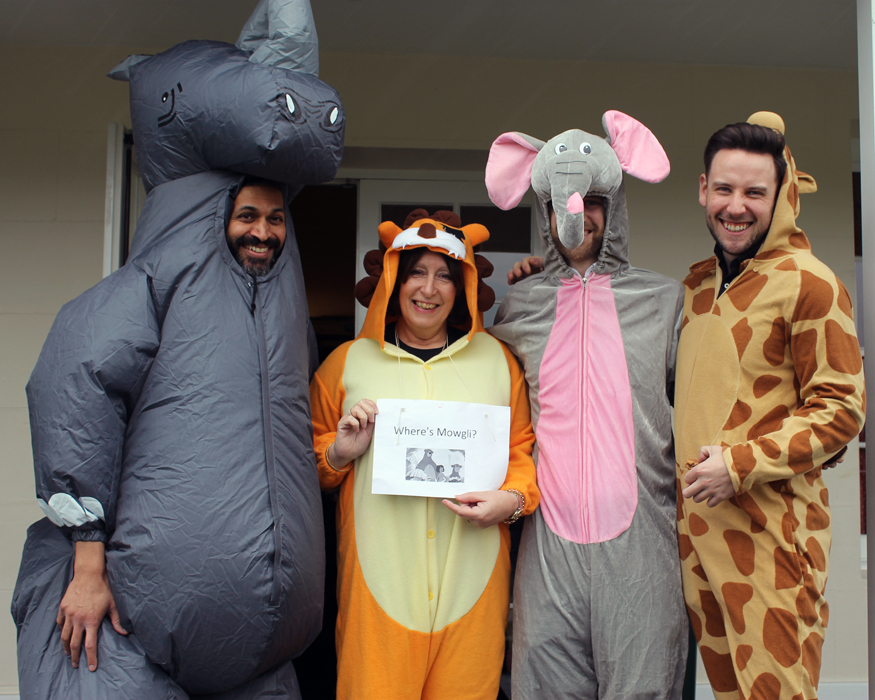
By sharing and learning to love the language of mathematics and having fun with it, our students give themselves the best chance of truly mastering it.

